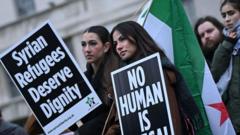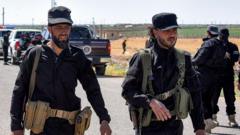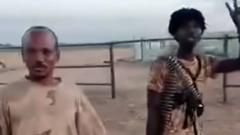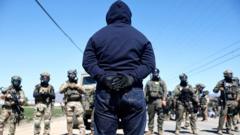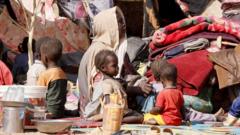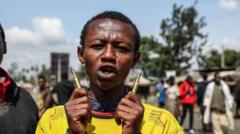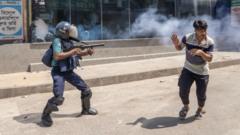As Idlib transitions under the control of Hayat Tahrir al-Sham following the fall of Assad, residents experience a mix of newfound freedoms and continued apprehensions about governance, amid efforts to stabilize a war-ravaged region.
Idlib: A Glimpse into Rebel Rule Post-Assad
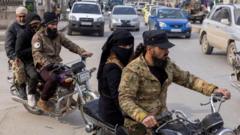
Idlib: A Glimpse into Rebel Rule Post-Assad
In the aftermath of Bashar al-Assad's removal, the city of Idlib has become a microcosm of life under rebel rule, showcasing both progress and the complexities of governance by Hayat Tahrir al-Sham.
Idlib, located in the north-west corner of Syria, has been a focal point of the country's civil war, and since 2017, has been under the influence of Hayat Tahrir al-Sham (HTS) after the group led a campaign that marked the end of the Assad regime's decades-long rule. While the remnants of war – such as trenches and abandoned military gear – are still visible along the roads, the situation in Idlib speaks volumes about what to expect as this rebel group emerges as the nation's de facto authority.
Recent visits to the city reveal a complex blend of stability and unrest whereby HTS has introduced a semblance of order, with functioning infrastructure, newly opened businesses, and even well-maintained roadways. Hammocks of opposition flags flutter in the wind, while citizens, young and old, openly express their relief from Assad’s grip. Doctor Hamza Almoraweh, who has witnessed significant reconstruction since 2017, asserts, “Idlib has a lot of things that it didn’t have under the Assad regime.” These improvements reflect HTS's ability to govern and manage essential services, funded largely through taxes collected from local businesses and agricultural activities.
HTS, originally steeped in al-Qaeda roots, has made concerted efforts to override its previous image, calling itself a nationalistic entity aimed at uniting the Syrian populace. However, many foreigners and nations, including the US, UK, and Turkey, still categorize it as a terrorist group, complicating its quest for legitimacy. Despite these challenges, observers report a degree of tolerance for public dissent, contrasting sharply with the previous regime’s repressive tactics.
While HTS has moderated snappy social rules, including previous bans on women’s attire and music in schools, underlying tensions remain. Some city residents have protested against what they perceive as authoritarian governance, raising concerns about possible future violations of basic freedoms. Activist Fuad Sayedissa posits, “It’s not a full democracy, but there’s freedom,” indicating a blend of satisfaction and caution among citizens now able to voice their opinions openly.
In nearby towns, such as the Christian village of Quniyah, community members celebrate newfound freedoms. Friar Fadi Azar notes a shift in their ability to practice religious traditions openly since HTS’s ascension. However, the lingering question remains: to what extent can residents trust their new rulers? Past poems of oppression still resonate deeply among Syrians cautiously optimistic about HTS’s promises of protection for minority groups.
As Idlib experiences a fluctuating landscape between reminiscence of past atrocities and hopes for progressive governance, its future under HTS continues to be a double-edged sword, casting both hope and worry across the region. Residents are bracing for the realities of living under a new authority, wondering if the changes are indeed genuine or merely superficial.

